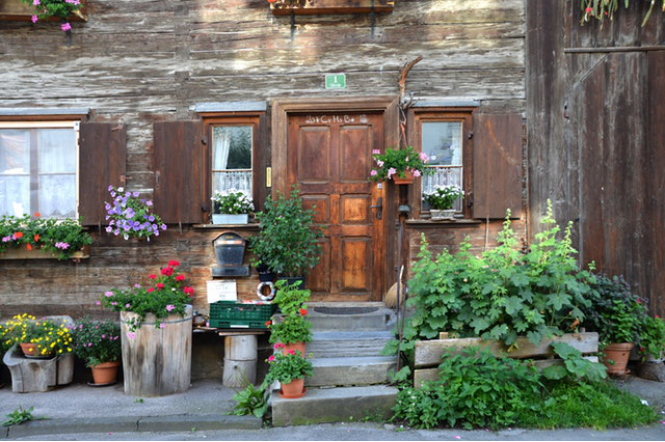
Before frost ravages your garden plants, turning stems and leaves lifeless, it’s essential that you bring in all houseplants which have been enjoying both sunshine and fresh air outdoors. Unfortunately, a sudden change to humidity and light levels will shock plants, causing these to drop foliage, and later, wilt and maybe even die. Therefore, it’s important to make the transition to the indoor environment easy for plants. Here are a number of tips worth trying out.
* Two weeks before area temperature goes below 7 degrees Celsuis, move all potted plants onto a covered porch or under a tree. By doing so, they can begin to adjust to any reduced light that they will get inside your house.
Another option is bringing the plants in while you can still open the windows.
Additional notes for the above step: There are tropical plants that might suffer damage at 50 degrees Fahrenheit, and as such, you are better off moving these much earlier.
* Repotting prior to moving in plants should be avoided. Usually, growth slows during autumn and winter, so you might want to do that specific chore in spring instead. If plants are big, take cuttings you must bring indoors to root instead. You can, otherwise, cut back any tall and leggy stems.
* If there are pests that have latched onto plants (and these might be just hiding under leaves), spray plants gently with water from a garden hose attached to a tap that’s connected to an underground rainwater tank. Another way to deal with plant pests is by placing these under a tepid, gentle stream of shower water. A horticultural or insecticidal spray can also be used. If plants are heavily diseased or infested, you might want to discard them as they will most likely not survive anyway. Worse, the disease or infestation might spread to other plants.
* Flushing pests out from containers requires that you soak all potted plants in warm water that’s in either a tub or bucket. The warm water needs to have a few drops of your common dishwashing liquid mixed in it. Soak potted plants for a quarter of an hour.
Additional notes for the above step: Plants which prefer drier soils such as succulents or cacti, as well as those which go dormant in winter, should never be soaked.
* Clean windows where plants will be sitting. Any grime that has accumulated reduces the total amount of light they’ll be getting. Remember that you need to give the plants you’ll be moving indoors just as much lighting as they get outside.
* Plants must be set away from heaters, drafts, furnace vents, and doors which will be opened often.
* If light that enters your windows is not that bright, make sure that it’s supplemented with grow lights or fluorescents. A number of timers must be set so plants are provided a resting period (i.e. some amount of darkness) each day.
* Rotate the plants which are growing under grow lights or other types of artificial lights. Keep in mind that light usually is less intense at the edge of the ray of light that bulbs generate.
* Raising humidity around plants involves grouping these together. You can also keep these near a steamy bathroom or the kitchen sink. A vaporizer also works wonders, and is just as good as sitting the plant pots on a number of saucers or trays that have pebbles and some amount of water. Just avoid letting the bottom parts of the pots sit in water; constant moisture causes root rot.
* Keep in mind that under reduced light, plants grow slower. And overwatering is one major reason behind the death of houseplants, so avoid pouring too much water on plants every time. Also, a number of plants do not require fertilizing until such time that they start actively growing again during spring.
* Once weather becomes warm again, acclimatize plants by doing the reverse of how you brought these indoors. Let these spend one or two weeks in a spot that’s shaded prior to exposing these to both wind and sun.



Leave A Comment